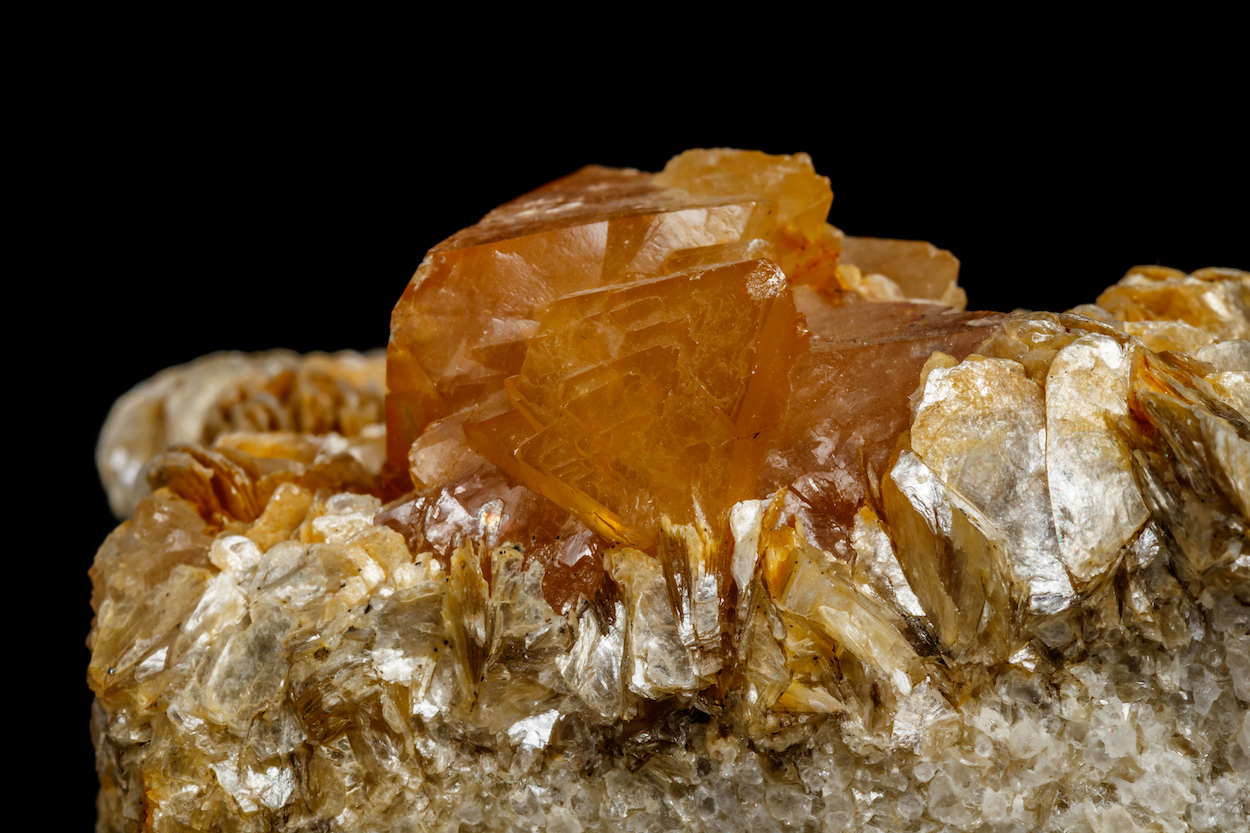- Home
- Manufacturing
- Established Production of Tungsten-Trioxide
Established Production of Tungsten-Trioxide
© 2024 MergersCorp M&A International.
© 2024 MergersCorp M&A International is a global brand operating through a number of professional firms and constituent entities located throughout the world to provide M&A Advisory and other client related professional services. The Member Firms are constituted and regulated in accordance with relevant local regulatory and legal requirements. For more details on the nature of our affiliation, please visit us on our website https://mergerscorp.com/disclaimer. MergersCorp M&A International is not a registered broker-dealer under the U.S. securities laws.
This website does not constitute an offer to sell, a solicitation of an offer to buy, or a recommendation of any security or any other product or service by MergersUS Inc. or any other third party regardless of whether such security, product or service is referenced in this website. Furthermore, nothing in this website is intended to provide tax, legal, or investment advice and nothing in this website should be construed as a recommendation to buy, sell, or hold any investment or security or to engage in any investment strategy or transaction.MergersCorp M&A International franchising program is not offered to individuals or entities located in the United States.
The franchising program is offered by MergersUK Limited a UK Company with registered office at 71-75 Shelton Street, Covent Garden, London, WC2H 9JQ, United Kingdom.
Established Production of Tungsten-Trioxide
Established Production of Tungsten Trioxide and Oxidized gold Copper in Samarkand region, Urgut district, Republic of Uzbekistan.
The geological structure of the site includes sediments of the Lower Devonian – (Madmon Formation) and lower – Middle Devonian with granodiorites of the Chashtepa intrusive. Intrusive formations are represented by porphyry-like biotite granodiorites, covered with lime-stones, shales and Quaternary sediments. Ore bodies No. 1, 1a, 2, 3 located at the site are in the process of assessment and a series of mineralization zones potentially promising for new ore bodies discovery of industrial scale have been identified.
The world’s reserves of tungsten are 3,200,000 tonnes; they are mostly located in China (1,800,000 t), Canada (290,000 t), Russia (160,000 t), Vietnam (95,000 t) and Bolivia. As of 2017, China, Vietnam and Russia are the leading suppliers with 79,000, 7,200 and 3,100 tonnes, respectively. Canada had ceased production in late 2015 due to the closure of its sole tungsten mine. Meanwhile, Vietnam had significantly increased its output in the 2010s, owing to the major optimization of its domestic refining operations, and overtook Russia and Bolivia.
Tungsten is mainly used in the production of hard materials based on tungsten carbide (WC), one of the hardest carbides. WC is an efficient electrical conductor, but W2C is less so. WC is used to make wear-resistant abrasives, and “carbide” cutting tools such as knives, drills, circular saws, dies, milling and turning tools used by the metalworking, woodworking, mining, petroleum and construction industries. Carbide tooling is actually a ceramic/metal composite, where metallic cobalt acts as a binding (matrix) material to hold the WC particles in place. This type of industrial use accounts for about 60% of current tungsten consumption.
The jewelry industry makes rings of sintered tungsten carbide, tungsten carbide/metal composites, and also metallic tungsten. WC/metal composite rings use nickel as the metal matrix in place of cobalt because it takes a higher luster when polished. Sometimes manufacturers or retailers refer to tungsten carbide as a metal, but it is a ceramic. Because of tungsten carbide’s hardness, rings made of this material are extremely abrasion resistant, and will hold a burnished finish longer than rings made of metallic tungsten. Tungsten carbide rings are brittle, however, and may crack under a sharp blow.
Reserves overview:
– Tungsten trioxide (off-balance)
– 10 915.5 t. with an average grade of 0.67% of Gold
– (С1+С2) – 1.7 t at avg. grade – 1.4 g/t;
As per 01.01.2021
Geological and industrial type:
– Oxidized gold-bismuth containing
– Copper-tungsten type
Enrichment technology
– Gravitymethod
– The cyanide method was used to extract gold
About
Resources
Contacts
M&A Deal Advisory
Corporate services
Consulting
© 2024 MergersCorp M&A International is a global brand operating through a number of professional firms and constituent entities located throughout the world to provide M&A Advisory and other client related professional services. The Member Firms are constituted and regulated in accordance with relevant local regulatory and legal requirements. For more details on the nature of our affiliation, please visit us on our website https://mergerscorp.com/disclaimer. MergersCorp M&A International is not a registered broker-dealer under the U.S. securities laws.
This website does not constitute an offer to sell, a solicitation of an offer to buy, or a recommendation of any security or any other product or service by MergersUS Inc. or any other third party regardless of whether such security, product or service is referenced in this website. Furthermore, nothing in this website is intended to provide tax, legal, or investment advice and nothing in this website should be construed as a recommendation to buy, sell, or hold any investment or security or to engage in any investment strategy or transaction.MergersCorp M&A International franchising program is not offered to individuals or entities located in the United States.
The franchising program is offered by MergersUK Limited a UK Company with registered office at 71-75 Shelton Street, Covent Garden, London, WC2H 9JQ, United Kingdom.
This website is operated by MergersUS Inc a US Corporation with registered office at
40th Wall Street, Suite #2725, New York, New York 10005, United States of America
Error: Contact form not found.
Error: Contact form not found.
Error: Contact form not found.
Error: Contact form not found.
























Description
Established Production of Tungsten Trioxide and Oxidized gold Copper in Samarkand region, Urgut district, Republic of Uzbekistan.
The geological structure of the site includes sediments of the Lower Devonian – (Madmon Formation) and lower – Middle Devonian with granodiorites of the Chashtepa intrusive. Intrusive formations are represented by porphyry-like biotite granodiorites, covered with lime-stones, shales and Quaternary sediments. Ore bodies No. 1, 1a, 2, 3 located at the site are in the process of assessment and a series of mineralization zones potentially promising for new ore bodies discovery of industrial scale have been identified.
The world’s reserves of tungsten are 3,200,000 tonnes; they are mostly located in China (1,800,000 t), Canada (290,000 t), Russia (160,000 t), Vietnam (95,000 t) and Bolivia. As of 2017, China, Vietnam and Russia are the leading suppliers with 79,000, 7,200 and 3,100 tonnes, respectively. Canada had ceased production in late 2015 due to the closure of its sole tungsten mine. Meanwhile, Vietnam had significantly increased its output in the 2010s, owing to the major optimization of its domestic refining operations, and overtook Russia and Bolivia.
Tungsten is mainly used in the production of hard materials based on tungsten carbide (WC), one of the hardest carbides. WC is an efficient electrical conductor, but W2C is less so. WC is used to make wear-resistant abrasives, and “carbide” cutting tools such as knives, drills, circular saws, dies, milling and turning tools used by the metalworking, woodworking, mining, petroleum and construction industries. Carbide tooling is actually a ceramic/metal composite, where metallic cobalt acts as a binding (matrix) material to hold the WC particles in place. This type of industrial use accounts for about 60% of current tungsten consumption.
The jewelry industry makes rings of sintered tungsten carbide, tungsten carbide/metal composites, and also metallic tungsten. WC/metal composite rings use nickel as the metal matrix in place of cobalt because it takes a higher luster when polished. Sometimes manufacturers or retailers refer to tungsten carbide as a metal, but it is a ceramic. Because of tungsten carbide’s hardness, rings made of this material are extremely abrasion resistant, and will hold a burnished finish longer than rings made of metallic tungsten. Tungsten carbide rings are brittle, however, and may crack under a sharp blow.
Reserves overview:
– Tungsten trioxide (off-balance)
– 10 915.5 t. with an average grade of 0.67% of Gold
– (С1+С2) – 1.7 t at avg. grade – 1.4 g/t;
As per 01.01.2021
Geological and industrial type:
– Oxidized gold-bismuth containing
– Copper-tungsten type
Enrichment technology
– Gravitymethod
– The cyanide method was used to extract gold
Basic Details
Target Price:
$150,000,000
Gross Revenue
TBA
EBITDA
TBA
Business ID:
L#20220343
Country
Uzbekistan
City:
Samarkand
Detail
Similar Businesses
Published on August 31, 2022 at 8:36 am. Updated on December 2, 2023 at 2:26 pm
20-Year Old FIFA Accredited Colored SBR Granule Manufacturing Business
€4,500,000
Manufacturing
Automatic & semi-automatic Water bottling Plant
€4,000,000
Manufacturing
Modern Chicken Processing Business
TBA
Manufacturing
20-Year Old Leading Manufacturing Business of Aluminum Profile
$60,000,000
Manufacturing
10-Year-Old Profitable Clothing Manufacturing Business
$1,750,000
Manufacturing
High-Grossing Countertop Fabrication Business
$11,000,000
Manufacturing
PREVIOUS PROPERTY
30-Year-Old Industrial Chemical Manufacturing Business
NEXT PROPERTY
Established Shopping Mall Center